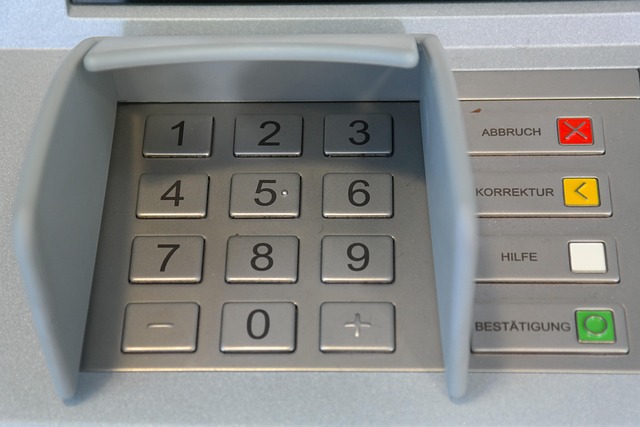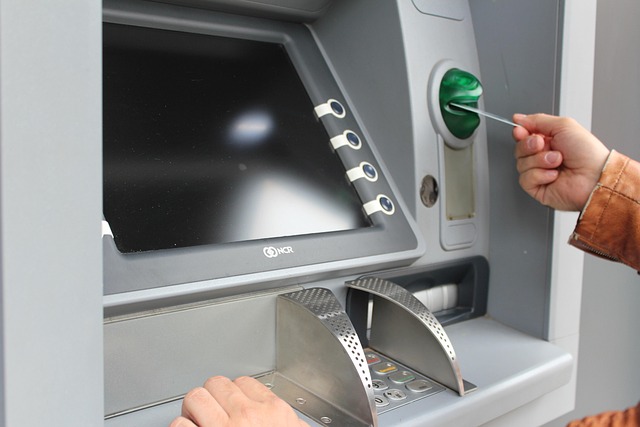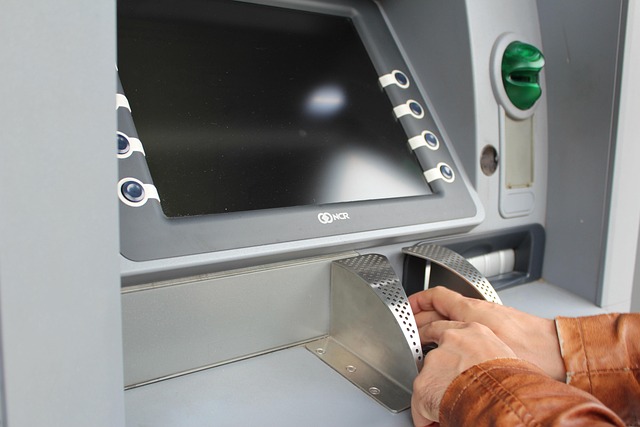How to Actually Use a Bitcoin ATM (And Why You Should)
Bitcoin ATMs are becoming increasingly common in cities worldwide, yet many people walk past them without understanding how they work or why they might want to use one. These machines offer a quick and relatively straightforward way to buy or sell Bitcoin using cash, bridging the gap between traditional currency and cryptocurrency. Unlike online exchanges that require extensive verification processes, bank account linking, and waiting periods, Bitcoin ATMs provide immediate access to cryptocurrency transactions. They’re particularly valuable for people who prefer cash transactions, don’t have bank accounts, or want to maintain more privacy in their crypto dealings. Understanding how to use these machines can open up new opportunities for participating in the digital currency economy, whether you’re a curious beginner or someone looking for alternative ways to acquire Bitcoin.
Understanding the Basics

Bitcoin ATMs, also known as BTMs, are physical kiosks that allow users to purchase Bitcoin and other cryptocurrencies using cash or debit cards, and in some cases, sell their cryptocurrency for cash. These machines function similarly to traditional bank ATMs but instead of dispensing cash from your bank account, they facilitate cryptocurrency transactions. The first Bitcoin ATM was installed in Vancouver, Canada in 2013, and since then, thousands have been deployed globally, with particularly high concentrations in the United States, Canada, and Europe.
The machines connect to cryptocurrency exchanges through the internet, allowing them to execute transactions at current market rates. Most Bitcoin ATMs are one-way machines, meaning they only allow purchases, but an increasing number are two-way machines that enable both buying and selling. The transaction process is designed to be user-friendly, guiding you through each step on the machine’s touchscreen interface. However, fees at Bitcoin ATMs tend to be higher than online exchanges, typically ranging from 7% to 20% of the transaction amount, which covers the operator’s costs and profit margin.
When you use a Bitcoin ATM, you’re essentially exchanging your physical cash for digital currency that gets sent directly to your cryptocurrency wallet. The machine generates a transaction on the blockchain and provides you with a receipt containing transaction details. Understanding this basic concept is crucial before approaching a Bitcoin ATM, as you’ll need to have a wallet ready to receive your Bitcoin.

Key Methods
Step 1: Setting Up Your Bitcoin Wallet Before You Go
Before you even approach a Bitcoin ATM, you must have a Bitcoin wallet prepared. This is absolutely essential because you need somewhere to receive the Bitcoin you’re purchasing. A Bitcoin wallet is a digital application that stores your private keys and allows you to send and receive cryptocurrency. There are several types of wallets to choose from: mobile wallets like Coinbase Wallet, Trust Wallet, or Exodus that you can download as apps on your smartphone; hardware wallets like Ledger or Trezor that store your keys offline for maximum security; or paper wallets that contain printed QR codes representing your keys.

For Bitcoin ATM transactions, mobile wallets are the most convenient option because they generate QR codes that the machine can scan instantly. Once you’ve downloaded your chosen wallet app, you’ll need to complete the setup process, which typically involves creating a secure password and, most importantly, writing down your recovery phrase. This recovery phrase is a series of 12-24 words that acts as a backup to restore your wallet if you lose access to your device. Never share this phrase with anyone and store it in a secure location. After setup, navigate to the “Receive” section of your wallet, which will display your Bitcoin address as both a string of characters and a QR code. This QR code is what you’ll present to the Bitcoin ATM to receive your purchased cryptocurrency.
Step 2: Locating and Approaching the Bitcoin ATM
Finding a Bitcoin ATM near you is easier than you might think. Websites like CoinATMRadar.com provide comprehensive maps showing the locations of Bitcoin ATMs worldwide, along with details about each machine including the operator, supported cryptocurrencies, buying and selling capabilities, and user reviews. Many Bitcoin ATMs are located in high-traffic areas such as convenience stores, gas stations, shopping malls, and restaurants. When you’ve identified a nearby machine, it’s worth reading recent reviews to understand other users’ experiences with that particular ATM, as service quality and fee structures can vary significantly between operators.

When you arrive at the Bitcoin ATM, take a moment to observe your surroundings and ensure the machine appears legitimate and well-maintained. Check for any signs of tampering, unusual attachments, or suspicious cameras that might be attempting to capture your personal information. Legitimate Bitcoin ATMs will have clear branding from known operators and should be located in reputable establishments. Before starting your transaction, have your smartphone with your Bitcoin wallet ready, as well as the cash you plan to exchange. It’s also wise to bring a valid government-issued ID, as many machines require identity verification for transactions above certain amounts, typically around $900-$1000, though this varies by location and operator.
Step 3: Completing Your Transaction at the Machine
Once you’re ready to proceed, begin by touching the screen to wake up the Bitcoin ATM interface. The first screen will typically ask you to select whether you want to buy or sell Bitcoin. For your first transaction, you’ll likely be buying, so select that option. Next, the machine will ask you to scan your Bitcoin wallet’s QR code. Open your wallet app, navigate to the “Receive” section, and hold your phone’s screen up to the ATM’s scanner so it can read your wallet address. This ensures the Bitcoin you purchase will be sent to the correct destination.

After scanning your wallet, you’ll need to complete any required identity verification. For smaller amounts, many machines only require a phone number for SMS verification. Enter your number, receive the verification code via text message, and input it into the machine. For larger transactions, you may need to scan your government-issued ID and possibly take a selfie for facial recognition verification. Once verification is complete, the machine will prompt you to insert your cash. Feed your bills one at a time into the cash acceptor. The machine will display the current Bitcoin exchange rate and show you how much Bitcoin you’ll receive for your cash, minus the transaction fee.
Review this information carefully to ensure you understand the exchange rate and fee structure. If you’re satisfied, confirm the transaction. The machine will process your payment and send the Bitcoin to your wallet address. This process typically takes a few seconds to a few minutes. The machine will print a receipt containing your transaction ID, the amount of Bitcoin purchased, the exchange rate used, and your wallet address. Keep this receipt for your records. Within minutes to hours, depending on network congestion, the Bitcoin will appear in your wallet as the transaction confirms on the blockchain.
Practical Tips
**Tip 2: Compare Fees Before You Go** – Bitcoin ATM fees vary dramatically between operators and locations, ranging from around 7% to over 20% of your transaction amount. Before visiting a Bitcoin ATM, use websites like CoinATMRadar.com to compare fees at different machines in your area. Some operators clearly display their fee structure online, while others are less transparent. Reading recent user reviews can give you insights into the total costs other people have experienced. While convenience has value, paying a 20% fee means you’re essentially losing one-fifth of your investment before you even start. Finding a machine with reasonable fees can make a significant difference, especially for larger purchases.
**Tip 4: Double-Check Your Wallet Address** – One of the most critical steps in using a Bitcoin ATM is ensuring the machine scans the correct wallet address. Bitcoin transactions are irreversible, meaning if you accidentally have the ATM send Bitcoin to the wrong address, there’s no way to retrieve it. Before confirming your transaction, verify that the wallet address displayed on the ATM screen matches the address shown in your wallet app. Check at least the first six and last six characters of the address. This simple verification step takes only seconds but can prevent the permanent loss of your funds. Never rush through this step, regardless of how busy the location is or how many people are waiting behind you.
**Tip 5: Save Your Receipt and Monitor the Transaction** – After completing your purchase, the ATM will print a receipt containing important transaction details. Keep this receipt in a safe place, as it contains your transaction ID, which you can use to track the transaction on the blockchain using websites like Blockchain.com or Blockchair.com. Bitcoin transactions aren’t instant; they need to be confirmed by miners on the network, which typically takes 10-60 minutes depending on network congestion and the fee paid by the ATM operator. Use your receipt’s transaction ID to monitor the progress of your transaction. Once it receives one confirmation, the Bitcoin is essentially yours, though many wallets wait for three to six confirmations before displaying the full amount as available for spending.
Important Considerations
While Bitcoin ATMs offer convenience and accessibility, there are several important factors to consider before using one. First and foremost is security. Always use Bitcoin ATMs in well-lit, public locations during business hours when possible. Be aware of your surroundings and ensure no one is watching you enter sensitive information or scanning your phone. Just as you would protect your PIN at a regular ATM, protect your privacy when using a Bitcoin ATM. Be cautious of anyone offering unsolicited help, as scammers sometimes target Bitcoin ATM users.
The high fees associated with Bitcoin ATMs are another crucial consideration. While the convenience may be worth it for some situations, regular users should recognize that these fees significantly reduce the value of their purchase. For frequent or large purchases, online exchanges typically offer much better rates. Additionally, Bitcoin’s price volatility means the value of your purchase can fluctuate significantly. The Bitcoin you buy today might be worth substantially more or less tomorrow. Only invest money you can afford to lose, and consider Bitcoin ATMs as one tool among many for accessing cryptocurrency rather than your primary investment vehicle.
Finally, be aware of the regulatory environment. Cryptocurrency regulations vary widely by jurisdiction and are constantly evolving. Some areas have strict requirements for Bitcoin ATM operators and users, while others have minimal oversight. Understanding the legal status of cryptocurrency in your location helps you make informed decisions and ensures you’re complying with local laws, particularly regarding taxation of cryptocurrency gains.
Conclusion
Bitcoin ATMs represent an important bridge between traditional finance and the world of cryptocurrency, offering immediate, physical access to digital assets. While they come with higher fees than online alternatives, they provide unmatched convenience for people who want to quickly purchase Bitcoin with cash, prefer face-to-face transactions, or have limited access to traditional banking services. By following the steps outlined in this guide—preparing your wallet in advance, locating a reputable machine, and carefully completing your transaction—you can confidently use a Bitcoin ATM for your cryptocurrency needs.
The key to a successful Bitcoin ATM experience is preparation and awareness. Understanding the process before you arrive, knowing what to expect in terms of fees and verification, and taking appropriate security precautions will ensure smooth transactions. Start small to build your confidence, compare fees between operators, and always double-check that your wallet address is correct before confirming any transaction. As cryptocurrency becomes increasingly mainstream, Bitcoin ATMs will likely become even more common and user-friendly, making them an accessible option for anyone interested in participating in the digital currency revolution. Whether you’re buying your first Bitcoin or simply exploring alternative methods for acquiring cryptocurrency, Bitcoin ATMs offer a tangible, immediate way to enter the crypto space with nothing more than cash and a smartphone.
